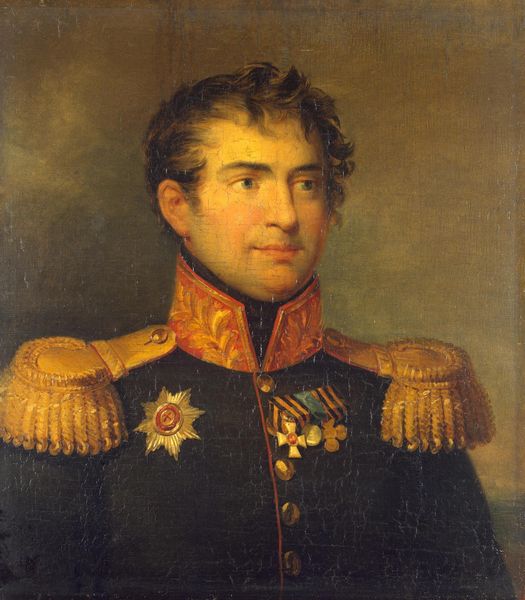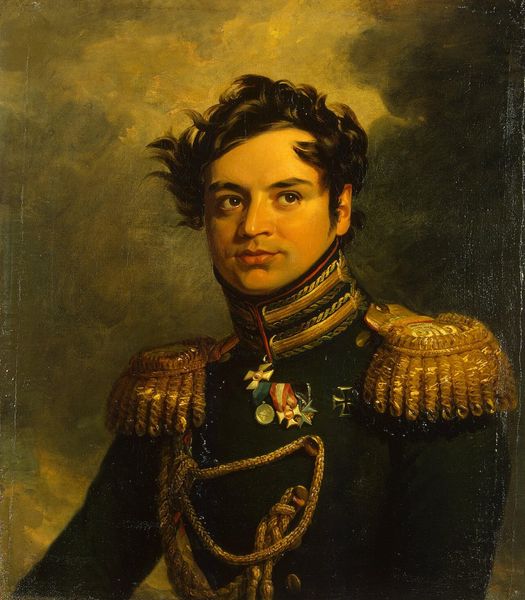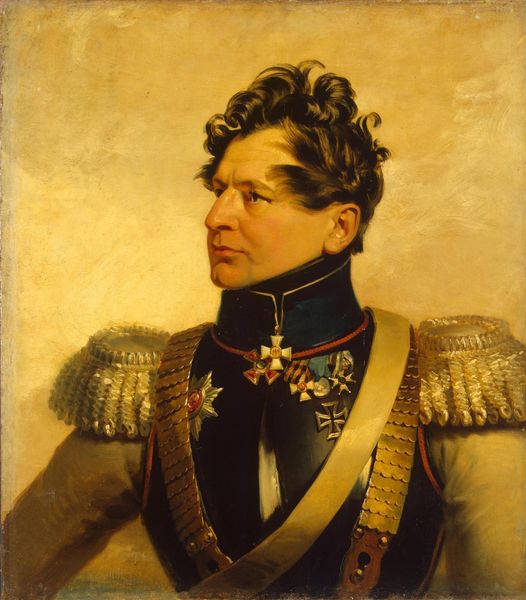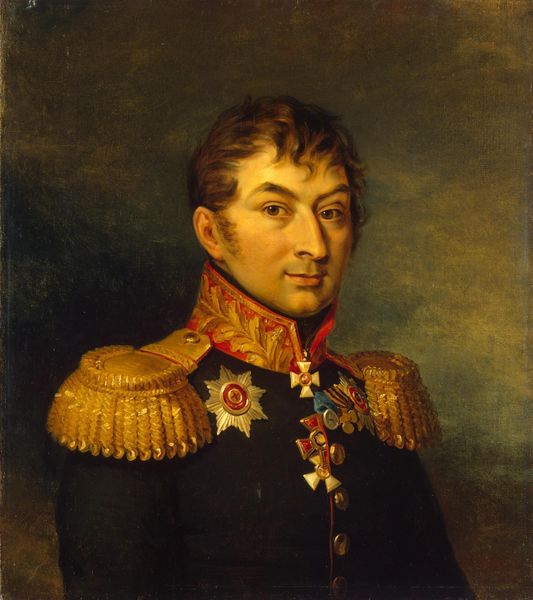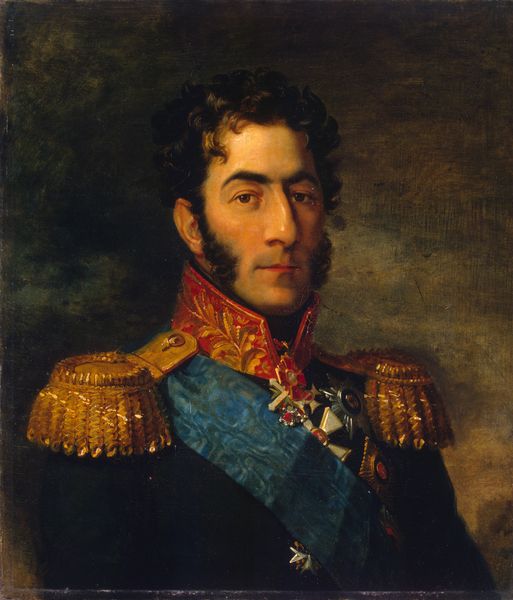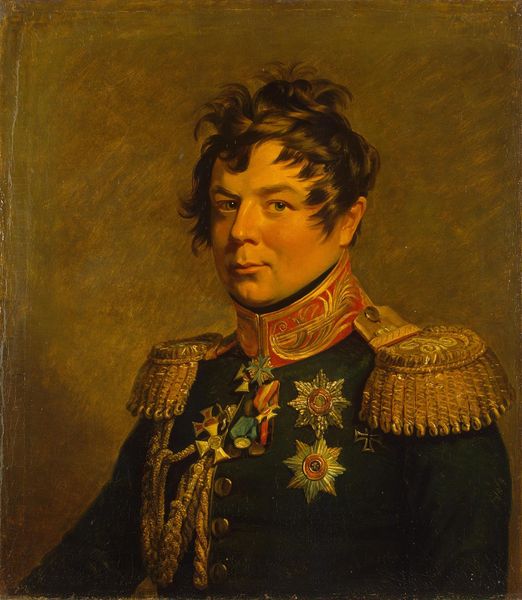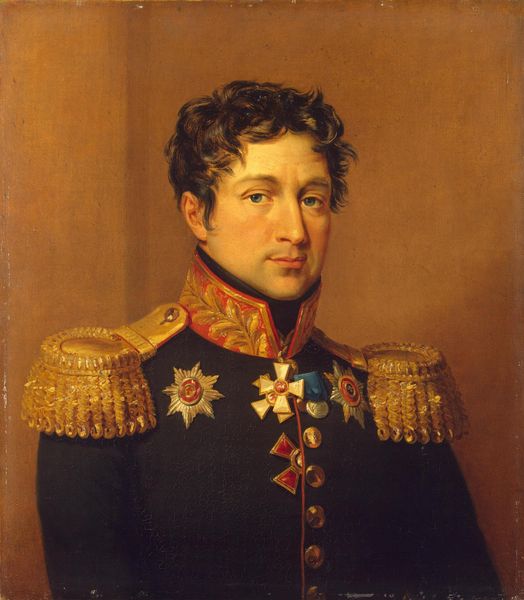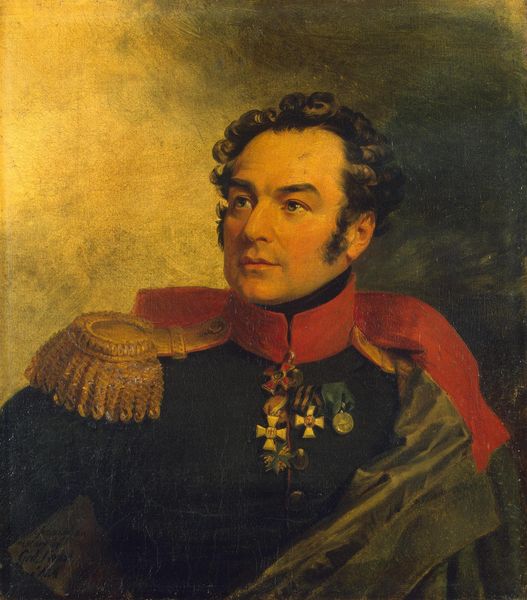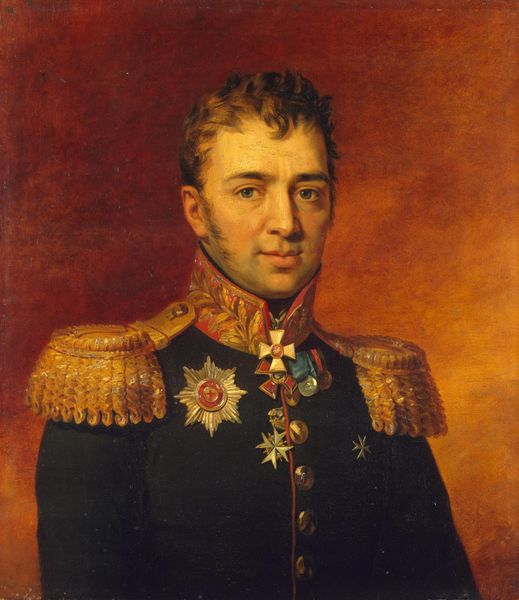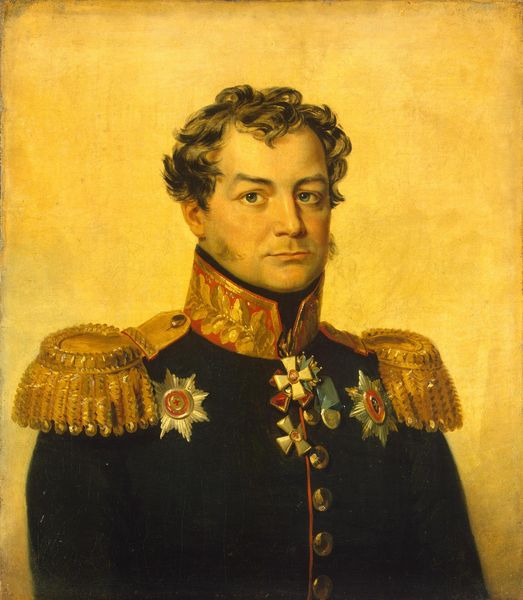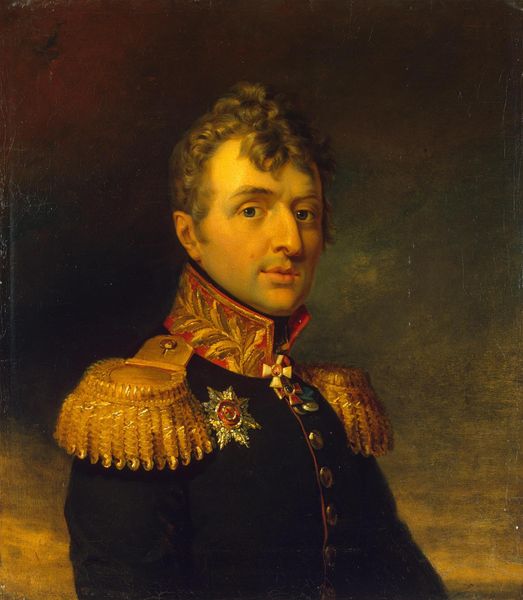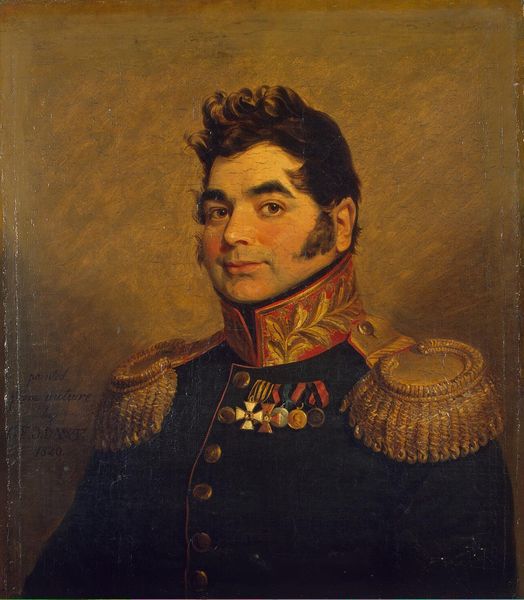
oil-paint
#
portrait
#
oil-paint
#
figuration
#
romanticism
#
history-painting
#
academic-art
Copyright: Public domain
Curator: Look at this commanding portrait of Kutaisov A.I by George Dawe, an oil painting dating back to 1825. Editor: He looks so… reserved. The somber tones, that stiff posture… It hints at a deeper unease, doesn’t it? The dark uniform almost swallows him. Curator: Dawe was commissioned to create portraits for the Military Gallery of the Winter Palace. Consider the process: these aren't intimate depictions but mass-produced representations meant to serve a specific ideological function: commemorating military victories. The repetitive nature of the labor itself shaped the final product. Editor: I’m drawn to the shimmering epaulettes; the contrasting textures add so much visual weight. Notice how they balance the soft light across his face, the almost classical contrapposto of his slight turn. Curator: Indeed. And consider who Kutaisov was: an artillery officer under Tsar Paul I and later Alexander I, who died in the battle of Borodino. His swift ascent was said to be tied to his close ties with Arakcheev which raises concerns about access, privilege, and social mobility within the military system. It is a fascinating, complex story when observed in historical terms. Editor: It’s that careful gradation of color around his features, softening his expression, that captivates me. The Romantic style makes you think about the individual. Curator: But his individual fate became entwined with massive events, shifts in military power, alliances forged and broken. This artwork serves not only as an aesthetic object but as a historical marker that exposes complex social mechanics within the context of warfare and political struggle. Editor: You are right, still that tension Dawe managed to express through just pose and lighting makes me perceive beyond historical record into psychological reading, it gives depth and drama that lingers. Curator: Absolutely. Together we can begin to truly analyze an image such as this by Dawe, thank you. Editor: Yes, by considering both formal aesthetics and social factors to understand its meanings.
Comments
No comments
Be the first to comment and join the conversation on the ultimate creative platform.
